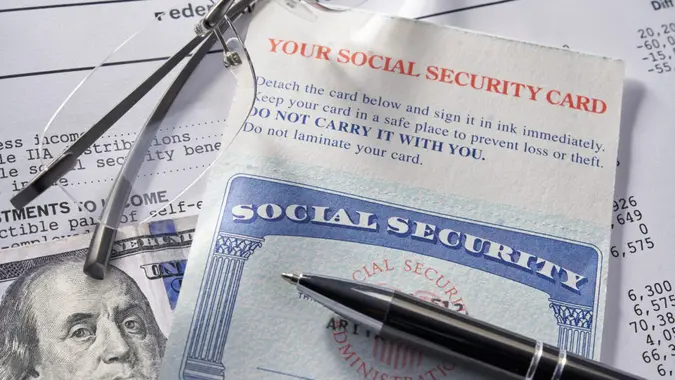What Is Social Security’s First Year of Retirement Rule?

Commitment to Our Readers
GOBankingRates' editorial team is committed to bringing you unbiased reviews and information. We use data-driven methodologies to evaluate financial products and services - our reviews and ratings are not influenced by advertisers. You can read more about our editorial guidelines and our products and services review methodology.

20 Years
Helping You Live Richer

Reviewed
by Experts

Trusted by
Millions of Readers
Retiring and claiming Social Security benefits is a major financial milestone, but it can also come with confusing rules, especially if you retire mid-year. One of the most important yet often overlooked guidelines is the First Year of Retirement Rule, which can significantly impact how much you receive in benefits during your initial year of retirement.
Understanding how this rule works can help you avoid unexpected benefit reductions and make smarter decisions about when to retire and start collecting Social Security.
What Is the First Year of Retirement Rule?
The First Year of Retirement Rule is a special provision from the Social Security Administration (SSA) that can benefit individuals who retire mid-year and begin collecting benefits before reaching their full retirement age (FRA).
If you aren’t familiar with the FRA, it specifies the age at which you can retire and receive your full benefits. For those born between 1943 and 1954, the FRA is 66 years of age, and it increases gradually based on when you were born.
Normally, if you claim Social Security before your FRA and continue working, your benefits may be reduced if your annual earnings exceed a certain limit. However, this rule offers a one-time exception: in your first year of retirement, the SSA evaluates your income monthly instead of annually.
That means you can still receive your full monthly benefit for any month you’re considered “retired,” as long as your earnings for that month are below the SSA’s monthly limit, even if your total income for the year exceeds the annual threshold.
This rule provides a helpful transition period for those easing into retirement, especially if they stop working partway through the year.
What Happens After the First Year?
It’s implied in the name, of course, but after your first year of collecting retirement benefits, the rules change. For those who have not yet reached their FRA and continue to work while receiving benefits, the SSA will reduce your benefit by $1 for every $2 of earnings over the limit.
In the year you reach your FRA, the rules change yet again — your benefit is reduced by $1 for every $3 of earnings over the limit. Thankfully, once you’re past the full retirement age, these earnings limits and benefit reductions end. So, if you’re still working past your FRA, you won’t have to worry about it.
Final Take To GO: Ask a Financial Advisor
If you’re still confused, don’t feel bad; it’s a complex issue. Don’t be afraid to consult a financial advisor, tax accountant or other professional. They can help you figure out the best time to start collecting benefits based on your personal financial situation, as well as quantify exactly what you can expect to receive.
Spending a little money up front for assistance can help ensure you receive the highest possible benefit and make your retirement that much more secure.
James Holbach contributed to the reporting of this article.
More From GOBankingRates
 Written by
Written by  Edited by
Edited by 

























